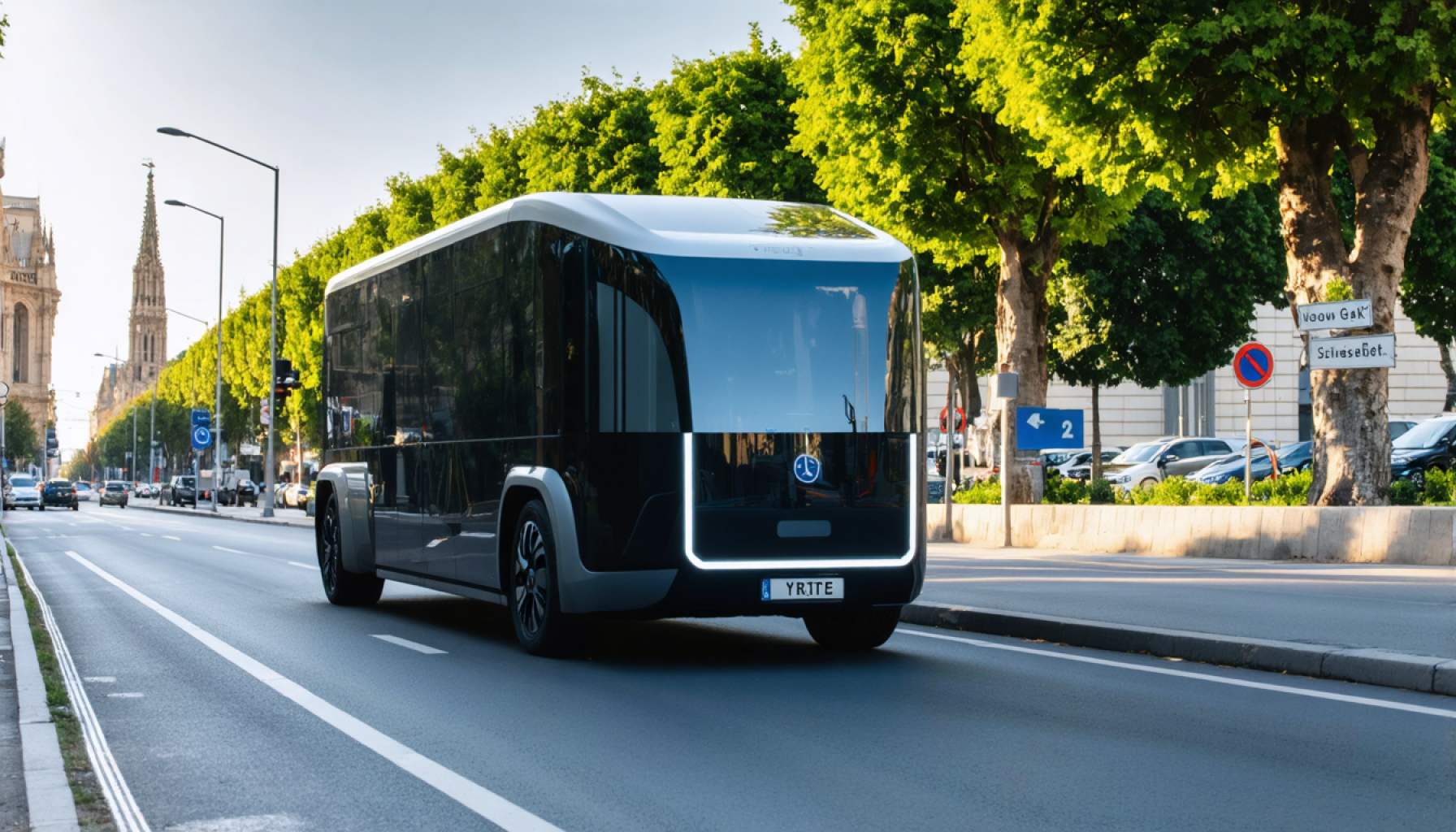
- Megawatt charging technologies are set to revolutionize heavy-duty transportation, driven by collaborative innovations at Autel’s European headquarters.
- The Testival event in Barcelona facilitated rigorous testing of EV communication controllers, fostering interoperability and advancing industry standards.
- Real-time innovation unveiled breakthroughs in electrical efficiency and thermal management, expediting global MCS infrastructure implementation ahead of schedule.
- Key industry players like Bosch and ADVANTICS contributed to harmonizing high-power EV charging solutions, promising transformative impacts on sectors like marine and mining.
- The advancements in megawatt charging have the potential to extend beyond land transport, influencing marine and airborne travel, and accelerating industry-wide electrification.
- A shared vision among industry pioneers at the Testival underscores a future where electric heavy-duty vehicles offer sustainable transport solutions and foster global industrial transformations.
Against the vibrant backdrop of Barcelona’s spirited energy, a collection of industry pioneers congregated in early April to fuel a quiet revolution in transportation. The collaborative effort unfolded at Autel’s European headquarters, where engineers and executives from around the globe joined forces to advance megawatt charging technologies—a leap forward for the electric vehicle sector, but more critically, a game-changer for heavy-duty transport solutions.
Blending Minds, Uniting Visions
This landmark Testival, orchestrated by Autel Europe and CharIN, ignited a flurry of innovation as developers of Electric Vehicle Communication Controllers (EVCCs) and Supply Equipment Communication Controllers (SECCs) engaged in rigorous testing. These intense sessions enabled the exchange of ideas and verification of interoperability among various megawatt charging systems. The diversity of expertise gathered under one roof underscored an unwavering commitment to crafting a seamlessly connected future for commercial fleets.
Real-Time Innovation in Action
In this bustling hive of technological exploration, real-time testing signaled the commencement of a new era. Engineers huddled over equipment, engaged in spirited dialogue and shared insights that transcended corporate boundaries. As systems powered up, the steady hum of technology paved the way for rigorous trials of electrical efficiency and thermal management. This resulted in swift identification and resolution of compatibility challenges, paving the way for global implementation of MCS infrastructure ahead of industry timelines.
A Vision for Integration
Autel’s Vice President of Sales & Marketing, Andreas Lastei, praised the event as a pivotal moment for collaboration in high-power EV charging solutions. The gathering wasn’t merely an opportunity to validate technologies but a significant push forward in harmonizing standards across the industry. With the presence of heavyweight companies like Bosch, ADVANTICS, and MAN, the potential for transformative improvements in sectors ranging from marine to mining became palpably realistic.
The Global Ripple Effect
Michael Keller of CharIN e. V. emphasized that steps taken in these testing environments would ripple through adjacent sectors, influencing not only land transport but also sea and airborne travel. In this way, megawatt charging doesn’t just electrify vehicles; it electrifies possibilities, bridging today’s innovations with tomorrow’s necessities.
Amid the exchange of technical insights and friendly collegiality, one undeniable truth emerges: the megawatt charge of the Testival heralds a future where electric heavy-duty vehicles dominate roadways, offer sustainable solutions, and drive industrial transformations. As these groundbreaking technologies continue to evolve, they illuminate the path towards a cleaner, more connected planet.
Shocking Developments: How Megawatt Charging is Revolutionizing Heavy-Duty Transport
Introduction
In the vibrant and bustling city of Barcelona, industry pioneers gathered at Autel’s European headquarters to drive forward a quiet revolution in transportation. This momentous event was not just another meeting but a collaborative summit focused on advancing megawatt charging technologies—a significant evolution for the electric vehicle sector, particularly for heavy-duty transportation solutions.
Understanding Megawatt Charging Systems (MCS)
What Are Megawatt Charging Systems?
Megawatt Charging Systems (MCS) represent a technological leap in the electric vehicle industry, enabling electric heavy-duty vehicles like trucks, buses, and industrial vehicles to be charged at exceptionally high power levels (greater than one megawatt). This ensures faster charging compared to conventional systems, thereby reducing downtime and increasing efficiency for commercial fleets.
How Does MCS Impact Various Industries?
– Transport Sector: Enables electric freight vehicles to operate more efficiently, reducing both operational costs and carbon footprints.
– Marine Industry: Provides a feasible option for electrifying ships and ferries, promoting eco-friendly transportation by sea.
– Mining: Facilitates the electrification of heavy machinery, enhancing sustainability and operational efficiency.
– Aviation: Although still in its infancy, concepts of applying MCS to support electric planes are being explored.
Real-World Use Cases and Market Forecasts
Use Cases:
1. Public Transport: Reduces overall emissions and simplifies transport logistics by minimizing the refuel time for buses.
2. Logistics: Revolutionizes freight logistics by significantly lowering time at depots, which enhances delivery schedules.
Market Trends:
– Analysts predict the market for high-power EV charging infrastructure will experience a compound annual growth rate (CAGR) of approximately 25% over the next decade.
– Increased government regulations focusing on carbon neutrality are accelerating the adoption of these technologies globally.
Benefits, Limitations, and Challenges
Pros:
– Reduction in charging time increases vehicle uptime.
– Environmentally friendly, facilitating progress towards achieving global climate goals.
– Encourages adoption of more EVs in commercial applications.
Cons:
– Initial infrastructure costs can be high.
– Requires significant upgrades to the existing power grid systems.
Challenges:
– Interoperability remains an issue as different manufacturers use varying technologies.
– Integration of such high power systems demands substantial advances in safety and thermal management.
Insights and Predictions
The advancements demonstrated at the Testival suggest that MCS systems will likely become mainstream faster than anticipated. The collaborative efforts have underscored the need for unified standards to drive adoption and ensure seamless operation across various platforms and countries.
Actionable Recommendations for Fleet Managers
1. Evaluate Current Fleet Needs: Determine power requirements and calculate potential cost savings from reduced charging times.
2. Plan for Infrastructure Investment: Consider investing in MCS infrastructure if scaling up electric heavy-duty vehicle operations.
3. Monitor Industry Developments: Keep abreast of updates in regulations and standards, which can influence technology implementation.
Conclusion
The megawatt charge at the Testival marks the dawn of a new era where electric heavy-duty vehicles will dominate roadways, presenting sustainable solutions and driving industrial transformations. As technologies evolve, there is an unwavering movement toward a cleaner, more connected planet, empowered by these groundbreaking advancements.
For more information on electric vehicle advancements, visit Autel and CharIN.



